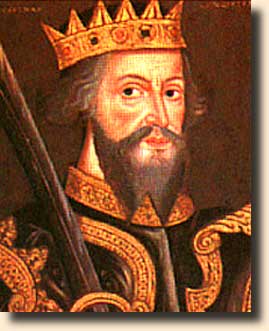
The first to understand the “information revolution’.
In 1066, William the Conqueror crossed the English Channel and landed in England.
He met Harold, Anglo Saxon King of England on the battlefield of Hastings and won.
He won because he embraced the then relatively new technology of stirrups. The Normans had stirrups for their horses, (derived from the armies of Genghis Khan), the Anglo Saxons did not.
The Normans were able to stand up on their horses, one hand for the reins, the other for the sword.
The English could not.
At the death of Harold on the field of battle, William found himself King of England.
A few years of rape and pillage and burning of villages and he was indeed King. The Normans had conquered England.
At least on the battlefield.
But what could be won on the field of battle could just as easily be lost.
William understood technology – he was the first to embrace stirrups. But he understood new technology and its power to a far greater degree. He was truly a man way ahead of his time.
In 1085, 19 years after his landing in England, he called his Norman Lords, the new masters of England together at the Cathedral in Gloucester.
There, he ordered them to criss-cross the land and gather every bit of information they could find.
Who owned what land.
How many cows?
How much grain did it produce?
How many casks of wine?
How many buidings?
How many people?
No one had ever done anything like this before. All the information was to be gathered into one great book. The Domesday Book.
It was called Domesday Book because once entered into the pages of the book, as with the Last Judgement, there would be no place to hide.
And indeed there was not.
13,418 separate places were surveyed. Every tree, every building, every cow, every pig was counted. There as no escape and no place to hide.
When the book was completed it was handed over to William.
At that moment, William held, quite literally, in his hands … England.
All of England.
Translated to data for the first time ever.
And now, William knew not only exactly what he owned but also exactly what everyone else owned. And what could be taxed.. or taken.
The Barons could no longer cheat or hide from The King.
William had transferred power from the end of a sword to a book.
To the Nobility, it was almost incomprehensible.
But it worked.
The ownership and the power of the Norman Conquest of England was assured.
And with an army of only 12,000 men, William was able to hold a nation of more than 2 million.
Any Anglo Saxon claim to power was forever quashed.
In William’s world, power was derived and held through a sword and through standing armies.
No one, besides William, was able to understand that control of data was far more powerful than steel.
Today, many conventional media companies are struggling to survive. They also can only see the sword – the old way of holding power or earning revenue.
But an embrace of a new technology and another way of maintaining supremacy might just require a rethink of where power in fact lays.
And it may not lay in standing armies.
Or standing armies of employees, for that matter.